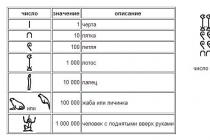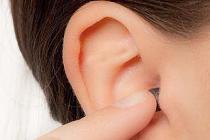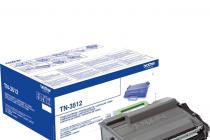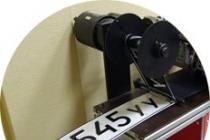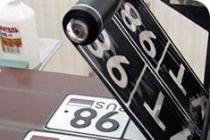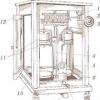Information about the brand, model and alternative names of a specific device, if any.
Design
Information about the dimensions and weight of the device, presented in different units of measurement. Used materials, offered colors, certificates.
| Width Width information - refers to the horizontal side of the device in its standard orientation during use. | 193 mm (millimeters) 19.3 cm (centimeters) 0.63 ft (feet) 7.6 in (inches) |
| Height Height information - refers to the vertical side of the device in its standard orientation during use. | 98.7 mm (millimeters) 9.87 cm (centimeters) 0.32 ft (feet) 3.89 in (inches) |
| Thickness Information about the thickness of the device in different units measurements. | 8.4 mm (millimeters) 0.84 cm (centimeters) 0.03 ft (feet) 0.33 in (inches) |
| The weight Information about the weight of the device in different units of measurement. | 260 g (grams) 0.57 lbs (pounds) 9.17 oz (ounces) |
| Volume The approximate volume of the device, calculated based on the dimensions provided by the manufacturer. Refers to devices with a rectangular parallelepiped shape. | 160.01 cm³ (cubic centimeters) 9.72 in³ (cubic inches) |
| Colors Information about the colors in which this device is offered for sale. | Black White |
| Materials for the manufacture of the case Materials used for the manufacture of the device body. | Plastic |
SIM card
A SIM card is used in mobile devices to store data that certifies the authenticity of mobile service subscribers.
Mobile networks
A mobile network is a radio system that allows multiple mobile devices to communicate with each other.
| Gsm GSM (Global System for Mobile Communications) is designed to replace the analog mobile network (1G). For this reason, GSM is often referred to as a 2G mobile network. It is enhanced by the addition of GPRS (General Packet Radio Services) and later EDGE (Enhanced Data rates for GSM Evolution) technologies. | GSM 850 MHz GSM 900 MHz GSM 1800 MHz GSM 1900 MHz |
| UMTS UMTS stands for Universal Mobile Telecommunications System. It is based on the GSM standard and refers to 3G mobile networks. Developed by 3GPP and its biggest advantage is to provide more speed and spectral efficiency thanks to W-CDMA technology. | UMTS 850 MHz UMTS 900 MHz UMTS 1900 MHz UMTS 2100 MHz |
| LTE LTE (Long Term Evolution) is defined as a fourth generation (4G) technology. It is developed by 3GPP based on GSM / EDGE and UMTS / HSPA with the aim of increasing the capacity and speed of wireless mobile networks. The subsequent development of technologies is called LTE Advanced. | LTE 800 MHz LTE 900 MHz LTE 1700/2100 MHz LTE 1800 MHz LTE 1900 MHz LTE 2100 MHz LTE 2600 MHz LTE-TDD 2300 MHz (B40) LTE-TDD 2600 MHz (B38) |
Mobile technology and data rates
Communication between devices in mobile networks is carried out using technologies that provide different data transfer rates.
Operating system
An operating system is the system software that controls and coordinates the operation of hardware components in a device.
SoC (System on Chip)
A system on a chip (SoC) integrates all the major hardware components of a mobile device into a single chip.
| SoC (System on Chip) A system on a chip (SoC) integrates various hardware components such as a processor, graphics processor, memory, peripherals, interfaces, etc., as well as the software necessary for their functioning. | MediaTek MT8735B |
| Technological process Information about the technological process by which the chip is manufactured. The value in nanometers is half the distance between the elements in the processor. | 28 nm (nanometers) |
| Processor (CPU) The main function of the processor (CPU) of a mobile device is to interpret and execute instructions contained in software applications. | ARM Cortex-A53 |
| Processor size The capacity (bits) of the processor is determined by the size (in bits) of registers, address buses and buses for data. 64-bit processors offer better performance than 32-bit processors, which in turn are more efficient than 16-bit processors. | 64 bit |
| Instruction set architecture Instructions are commands with which the software sets / controls the processor. Information about the instruction set (ISA) that the processor can execute. | ARMv8-A |
| Level 1 cache (L1) The cache memory is used by the processor to reduce the time it takes to access more frequently used data and instructions. L1 (level 1) cache is small and much faster than both system memory and other levels of cache. If the processor does not find the requested data in L1, it continues to look for it in the L2 cache. On some processors, this search is performed simultaneously in L1 and L2. | 32 KB + 32 KB (kilobytes) |
| L2 cache L2 (level 2) cache is slower than L1, but instead has a larger capacity to cache more data. It, like L1, is much faster than system memory (RAM). If the processor does not find the requested data in L2, it continues to look for them in L3 cache memory (if available) or in RAM memory. | 512 KB (kilobytes) 0.5 MB (megabytes) |
| Number of processor cores The processor core executes program instructions. There are processors with one, two or more cores. Having more cores increases performance by allowing multiple instructions to execute in parallel. | 4 |
| CPU clock speed The clock speed of a processor describes its speed in cycles per second. It is measured in megahertz (MHz) or gigahertz (GHz). | 1300 MHz (megahertz) |
| Graphics processing unit (GPU) A graphics processing unit (GPU) handles computation for a variety of 2D / 3D graphics applications... V mobile devices ah, it is used most often by games, consumer interface, video applications, and more. | ARM Mali-T720 MP2 |
| Number of GPU cores Like a processor, a GPU is made up of several working parts called cores. They handle the graphical computation of various applications. | 2 |
| Volume random access memory(RAM) Random access memory (RAM) is used by the operating system and all installed applications. The data that is saved in the RAM is lost after the device is turned off or restarted. | 2 GB (gigabytes) |
| Memory type (RAM) Information about the type of random access memory (RAM) used by the device. | LPDDR3 |
| Number of RAM channels Information about the number of RAM channels which are integrated into the SoC. More channels means more high speeds data transmission. | Single channel |
Built-in memory
Each mobile device has built-in (non-removable) fixed memory.
Memory cards
Memory cards are used in mobile devices to increase the storage space for data.
Screen
The screen of a mobile device is characterized by its technology, resolution, pixel density, diagonal length, color depth, etc.
| Type / technology One of the main characteristics of the screen is the technology by which it is made and on which the image quality of information directly depends. | IPS |
| Diagonal On mobile devices, screen size is expressed in terms of the length of its diagonal, measured in inches. | 6.98 in (inches) 177.29 mm (millimeters) 17.73 cm (centimeters) |
| Width Approximate screen width | 6.08 in (inches) 154.52 mm (millimeters) 15.45 cm (centimeters) |
| Height Approximate screen height | 3.42 in (inches) 86.92 mm (millimeters) 8.69 cm (centimeters) |
| Aspect ratio The aspect ratio of the long side of the screen to its short side | 1.778:1 16:9 |
| Permission Screen resolution shows the number of pixels horizontally and vertically on the screen. More a high resolution means sharper image detail. | 1280 x 720 pixels |
| Pixel density Information about the number of pixels per centimeter or inch of the screen. Higher density allows information to be shown on the screen in clearer detail. | 210 ppi (pixels per inch) 82 ppcm (pixels per centimeter) |
| Color depth Screen color depth reflects the total number of bits used for color components in one pixel. Information about the maximum number of colors that the screen can display. | 24 bit 16777216 flowers |
| Screen footprint The approximate percentage of the display area on the front of the device. | 70.74% (percent) |
| Other characteristics Information about other functions and features of the screen. | Capacitive Multitouch |
| 350 cd / m² |
Sensors
Different sensors perform different quantitative measurements and convert physical metrics into signals that can be recognized by the mobile device.
Rear camera
The main camera of a mobile device is usually located on its rear panel and can be combined with one or more additional cameras.
| Sensor type Information about the type of camera sensor. Some of the most widely used sensor types in mobile cameras are CMOS, BSI, ISOCELL, and others. | CMOS (complementary metal-oxide semiconductor) |
| Light-strength Aperture (also known as aperture, aperture, or f-number) is a measure of the size of the lens aperture, which determines the amount of light entering the sensor. The lower the f-number, the larger the aperture and the more light reaches the sensor. Usually, the f-number is indicated, which corresponds to the largest possible aperture of the aperture. | f / 2.4 |
| Image Resolution Resolution is one of the main characteristics of cameras. It represents the number of horizontal and vertical pixels in the image. For convenience, smartphone manufacturers often quote resolutions in megapixels, indicating the approximate number of pixels in millions. | 2592 x 1944 pixels 5.04 MP (megapixels) |
| Video resolution Information about the maximum video resolution that the camera can record. | 1280 x 720 pixels 0.92 MP (megapixels) |
| Video recording rate (frame rate) Information about the maximum recording rate (frames per second, fps) supported by the camera at maximum resolution. Some of the most basic video recording speeds are 24 fps, 25 fps, 30 fps, 60 fps. | 30 frames / sec (frames per second) |
| Specifications Information about additional software and hardware features of the rear (rear) camera. | Autofocus Burst shooting Digital zoom Geographic tags Panoramic shooting HDR shooting Touch focus Face recognition Adjusting the white balance ISO setting Exposure compensation Self-timer Scene selection mode |
Front-camera
Smartphones have one or more front cameras of different designs - pop-up camera, PTZ camera, notch or hole in the display, camera under the display.
Audio
Information about the type of speakers and audio technology supported by the device.
Radio
The radio of the mobile device is a built-in FM receiver.
Locating
Information about the navigation and positioning technologies supported by the device.
Wi-Fi
Wi-Fi is a technology that enables wireless communication for transferring data over short distances between various devices.
Bluetooth
Bluetooth is a standard for secure wireless transfer of data between different types of devices over short distances.
USB
USB (Universal Serial Bus) is an industry standard that allows different electronic devices to exchange data.
Headphone jack
This is an audio connector, which is also called an audio connector. The most widely used standard in mobile devices is the 3.5mm headphone jack.
Connecting devices
Information about other important connection technologies supported by the device.
Browser
A web browser is a software application for accessing and viewing information on the Internet.
Video file formats / codecs
Mobile devices support different video file formats and codecs, which respectively store and encode / decode digital video data.
Battery
Mobile device batteries differ in their capacity and technology. They provide the electrical charge required for their function.
| Capacity Battery capacity indicates the maximum charge it can store, measured in milliampere-hours. | 3500 mAh (milliampere-hours) |
| Type of The type of battery is determined by its structure and, more precisely, by the chemicals used. Exists different types lithium-ion and lithium-ion-polymer batteries are most commonly used in mobile devices. | Li-polymer |
| Talk time 2G Talk time in 2G is the period of time during which the battery charge is completely discharged during continuous talk on a 2G network. | 10 h (hours) 600 min (minutes) 0.4 days |
| Standby time 2G Standby time in 2G is the period of time during which the battery charge is completely discharged when the device is in stand-by mode and connected to a 2G network. | 336 h (hours) 20160 min (minutes) 14 days |
| Talk time 3G Talk time in 3G is the period of time during which the battery charge is completely discharged during a continuous conversation on a 3G network. | 10 h (hours) 600 min (minutes) 0.4 days |
| 3G standby time Standby time in 3G is the period of time during which the battery is completely discharged when the device is in stand-by mode and connected to a 3G network. | 336 h (hours) 20160 min (minutes) 14 days |
| Adapter output power Information about the strength of the electric current (measured in amperes) and the electric voltage (measured in volts) supplied by the charger (output power). Higher power output provides faster battery charging. | 5 V (volts) / 1 A (amps) |
| Specifications Information about some additional characteristics of the device's battery. | Non-removable |
Specific Absorption Rate (SAR)
SAR levels refer to the amount of electromagnetic radiation absorbed by the human body when using a mobile device.
| SAR level for head (USA) The SAR level indicates maximum amount electromagnetic radiation to which the human body is exposed if the mobile device is held close to the ear. The maximum value used in the United States is 1.6 W / kg per gram of human tissue. US mobile devices are controlled by CTIA and the FCC conducts tests and sets their SAR values. | 0.89 W / kg (Watts per kilogram) |
| Body SAR (US) The SAR level indicates the maximum amount of electromagnetic radiation that a person's body is exposed to when holding a mobile device at hip level. The highest SAR value in the United States is 1.6 W / kg per gram of human tissue. This value is set by the FCC and CTIA monitors mobile devices for compliance with this standard. | 1.19 W / kg (Watts per kilogram) |
Contents of delivery:
- Tablet
- Charger 5V 1A
- USB cable
- Instructions




Positioning
Lenovo believes that the direction of Android tablets is one of the most promising, which means that it is necessary to saturate the market with devices with different screen sizes and different functionality. Since there are many players on the market, Lenovo has identified several series of devices, so in the series under the letter A budget models are presented - the line is built according to simple principle- the screen diagonal differs, A7 - seven, A8 - eight, A10 - ten inches. Everything is perfectly clear, the amount of memory, the presence of a 3G module and a number of other characteristics can also vary. On Russian market models with 3G are presented, they are interesting in terms of price / quality ratio, but they are not minimal in terms of cost, this is a deliberate step. Also, unlike the original series, there are no various color solutions - the manufacturer offers only one color, all models are combined by this parameter and stand out strongly among budget devices, which are usually either black or occasionally white. A-series from Lenovo is blue, made of velvety plastic.
Lenovo believes that the A-series should be as simple as possible and at the same time have some additional feature that distinguishes it from all other tablets. The feature of these products is the presence of stereo speakers. On paper, the presence of a 5MP main camera looks very good, but below we will make sure that it is not very good. On the other hand, very few people need a camera in a tablet.
At first, I had the thought that it was necessary to write three separate reviews for these devices, but their similarity, the same functionality forced me to combine these materials - why multiply entities? There are hardware differences in these devices, we will talk about them in detail below.
From the consumer's point of view, Lenovo A-series tablets are interesting if you want a good price / quality ratio, you don't want to overpay for a brand, for example, Samsung, but at the same time, their unknown or incomprehensibility with warranty service stops them from buying B-brands. In one way or another, Lenovo is known for the PC and laptop market, which in Russia creates the prerequisites for trusting this brand. It is good that the company did not dare to raise the price of its products, leaving them at an acceptable level. However, let's take a look at these tablets and discuss what's good about them.
Design, dimensions, controls
The plastic of the back panel is velvety, dark blue, it is very pleasant to the touch. It is impossible to call the A-series tablets miniature and very light, due to the design of the case, the abundance of plastic, they stand out among their classmates - but not too much. The edge is offset by the feel of a solidly assembled product, although from a design point of view, there is no fancy here.



In my opinion, a very good move with different body colors, the rear panel is different. It's a pity, but in Russia there is no variety of choices, you can only take a device of one color. It is possible that other colors will appear later, or maybe the company decided to promote one color, which is also logical.
Packaging of tablets is very common, it does not differ in anything special - a cardboard box in which the device, a charger, and instructions are packed. In the 10-inch version, the bag shows not to be worn over the head.

Structurally, all tablets are the same - there are speakers on the front panel on both sides of the screen, they are covered with a mesh. There is a front camera, and in the 10-inch device it is exactly in the middle, in landscape orientation - the other two tablets are oriented vertically. Considering that there are no hardware keys, and there are only on-screen buttons, it does not matter how to take the tablet, how to turn it.



On the right side there is a paired volume rocker, an on / off button, on the other side, behind a hinged cover, there is a slot for memory cards and a full-size SIM card. At the top there is a 3.5 connector, as well as a microUSB connector for charger... In the A10, the elements are arranged a little differently - the power button is on the upper left, but on the left end there are all the remaining elements. This is not always convenient, it creates certain problems, since you need to press the keys using two hands. We hold one, we press the second. Acrobats with pumped-up arms can press the volume button with one hand on the weight, but there is a chance of dropping the device.
Let's take a look at the size and weight of the models:
- А7 - 198х121х10 mm, 300 grams
- A8 - 217x136x9 mm, 350 grams
- A10 - 176x264x9 mm, 550 grams








It is clear that the younger model is the most compact, if you wish, you can hide it in the pocket of your clothes, but comparison with the Nexus 7 of 2013, it will not stand it - it looks big and feels much heavier. These are products of different classes, so the A7 should not be considered a deliberately loser device, their cost differs, and you have to pay for the budget with a large body. If there is no doubt that the A10 cannot be put in your pocket, then with the A8 it is a moot point. But I would say that it is not very convenient, the A7 is the most compact device.

Considering that with excellent diagonals the resolution of the screens is the same, then it is worth looking at exactly what size suits you best, what you like and how you plan to use your tablet - more at home or still take it with you on the road.
I have no complaints about the build quality of the devices, they are good for their class.
Display
In each case, an inexpensive IPS-matrix is used, its resolution is 1280x800 pixels, the screen is covered with a plastic surface, it is not scratched, but quickly becomes covered with traces of touch - a typical coating for budget devices. Lenovo emphasizes that these screens have wide viewing angles, and this is true.
To my taste, the color saturation is not bad, the picture is excellent for its class, it raises no complaints. All models lack a light indicator, this is a typical feature of budget devices - you can only adjust the brightness manually, which is not always convenient. The savings are negligible, but the inconvenience is real. On the other hand, no one promised this, after all, we have before us models that are positioned as budget and in fact are such, including their cost.



If the screens in A7, A8 are comparable in all respects, then in A10 it is more colorful, but the number of dots per inch is less, as a result, the picture is grainy, not as clear as on previous devices. The optimal size for many will be 8 inches, it gives a large picture area and is optimal for a variety of tasks, from watching video to working on the network.




The screens lose color in the sun, but the picture remains clearly visible, so this is not a problem. It may not be possible to watch a movie on the beach, but it is quite possible to read the text.
Battery
The larger the screen, the more energy it consumes - these are the laws of physics. Therefore, with the same matrices, each model was equipped with its own battery, they are all Li-Pol, but the capacities differ - 3450, 4200 and 6340 mAh. According to the manufacturer, the operating time is 14, 8 and 7 hours, respectively. What is the working time is not entirely clear to me, since everyone can have their own work, someone watches a video, someone is online. Playing video with maximum brightness and headphones gives the following results - 8, 6 and 5.5 hours. When using tablets for games, the time may be even less. But on average, you will charge them once every 5-6 days if you use the devices in moderation. That is, there are no special revelations here. The full charging time of the tablets (5V, 1A) is 3, 4 and 6.5 hours, respectively.
For the budget segment, the operating time is quite normal, you cannot complain about it.

Hardware platform, memory, performance
All specifications indicate that all tablets are built on budget processor MediaTek MT8382, which was specially created as an inexpensive solution for such devices. Four cores, maximum clock speed 1.3 GHz. Not bad energy saving. To my surprise, the A7 model runs on the previous generation of the MediaTek processor - MT6582, which, in fact, became the prototype of the MT8382, but differs in a slightly higher price. There is not much difference in performance, these are solutions of the same order, so it is not so important which processor costs - you will not see any differences, in future shipments to the A7 there will obviously be a transition to MT8382.
Here is the performance for the A7.








And this is what the performance looks like for the A8, as well as the A10.










1 GB of RAM, which provides a good interface speed, no slowdowns, the interface is responsive. It is not the fastest and does not instantly open certain sections, but it is almost imperceptible. Compared to other Lenovo series, you can probably see a difference, but for budget devices, everything is fine. The same MegaFon Login 2, very slow in comparison with the A7, but it costs only 3,000 rubles.
Memory cards are supported up to 32 GB in size and are hot swappable.
The amount of built-in memory is 16 GB, a little over 13 GB is available to the user.

Communication capabilities
In products based on MediaTek chipsets, the operation of GPS often depends on the quality of the antenna implementation and the manufacturer's experience; in these tablets, there are no problems - the start is quick, the connection to the terrain is no problem.
The work of 3G also raises no complaints, one of the downsides is the inability to make voice calls, this functionality is blocked. But you can receive SMS, send messages.
Support for Bluetooth, Wi-Fi 802.11 b / g / n - everything is familiar here, and there are no special features. When connected to a computer via USB 2.0, the device memory is visible as a removable storage device (USB Mass Storage). An area is also highlighted in memory, which stores proprietary software for synchronization with a PC, but you are unlikely to need it, everything works without software, although you may want to install drivers.
Camera
The main camera has a resolution of 5 megapixels, but it shoots very, very poorly. This is a budget option, it seems to me, interpolation from 3.2 megapixels, which is not done very well. However, look at the pictures and videos, everything will become clear to you.









Software Features - Android 4.2.2
The tablets are equipped with Android 4.2.2, there is no information about an update to 4.3 or, moreover, to newer versions. In my opinion, when buying budget devices, you should not expect them to receive updates for the latest Android version- as a rule, this does not happen. At the same time, Lenovo comes out with a large number of patches to improve functionality, they fly by air, and they can be installed right there.


In terms of interface, this is a typical Android with minimal changes. So, you might have side panel in different menus, just hold your hand and pull it out - there are program icons in it, some quick settings... You quickly realize that the panel is rather interfering, and you turn it off (it is turned off by default).










The younger model, oddly enough, does not support Dolby Plus (this is due to the chipset used), the A8 and A10 have such equalizers, they can be configured for everything separately - music, movies, games, applications.


The built-in FM radio supports recording, which is good. But a headset is required, it plays the role of an antenna.


Branded utilities from Lenovo are represented by the ShareIt program - the exchange of various files with other devices where this software is installed, as well as SyncIt HD - the archiving of various data, both on a memory card and in the cloud.


As well as on phones, there is an application "Power Manager", it shows how much the device will work on battery, allows it to be charged correctly, switch to different modes work. Something similar can be found in the Play Store, the beauty of this program is that it is preinstalled.






Explorer, voice recorder, calculator, clock - all these applications have been slightly redesigned externally, but the functionality is the same as in the standard ones familiar to Android.





For navigation, the Navigate 6 program is offered, it has trial version for 30 days. There is no sense in using it in Russia. I also do not recommend installing Norton Mobile antivirus, it is not needed. The Kingsoft Office application for reading and creating office files is not at all useless, it is great.
Often tablets serve not only as an entertainment center, but also for work, especially if there is a 3G module. This is exactly the kind of tablet we got for the test. Meet the affordable 7 '' tablet with GPS support(A-GPS), 3G module and the ability to make voice calls - Lenovo TAB 2 A7-30.
The delivery set for this model is standard. In a medium-sized box, besides the tablet itself, there is a 1A charger, USB cable medium length and paper documentation.

Appearance and ergonomics
Thanks to the aspect ratio of the display 16: 9, the device came out not very wide. By and large, we have a very big smartphone... The dimensions of the device are 191x105x9.3 mm and the weight is 269 grams.




The front side of Lenovo TAB 2 A7-30HC is covered by a protective glass. The microphone is at the bottom. On the top, there is a USB connector and a 3.5 mm audio output. The location of the mechanical keys is standard - on the right sidewall. The back side is covered with a black matte cover. You cannot remove it. In the left upper corner the lens of the main camera is located.








In general, the case is not bad, but not without flaws. Among the latter, it is worth highlighting a loose fit. back cover... And if the first couple of days there is no squeak, then over time, "crickets" still appear. Otherwise, in terms of ease of use, everything is fine.




Software and shell
The tablet runs on Android 4.4.2 operating system. The proprietary interface Lenovo Launcher HD version 1.4.5 is used as a shell. The interface is well known from other smartphones / tablets of the company, so we will not dwell on it in detail. Let's just say that the device is fast enough.













Hardware platform
The heart of Lenovo TAB 2 A7-30HC is a quad-core MediaTek processor MT8382. Each of the four ARM Cortex-A7 (ARMv7-a) cores is clocked at up to 1.3 GHz. Integrated GPU Mali-400 MP2 has maximum frequency 500 MHz.





The company did not implement support for two SIM-cards for working in 3G networks, which is provided by the chipset, and limited itself to one slot for one “regular” SIM-card of the miniSIM standard. The amount of RAM is 1 GB, but after switching on, only about 300 MB are available. The built-in storage has a capacity of 16 GB of which 12.66 GB is available to the user.





The dialer interface is familiar from other Lenovo devices. The speaker volume during a call is excellent, and the quality of the microphone is not disappointing. According to this parameter, the tablet can give odds to some smartphones. It is also worth noting that there is a Dolby Audio logo on the back of the lid. The interface and impressions of the software equalizer are generally the same as on.





Wireless interfaces are represented by Wi-Fi of the IEEE 802.11 b / g / n standard, the previously mentioned cellular module with support for data transmission according to UMTS / HSPA + / EDGE standards, Bluetooth 4.0, an FM receiver, and GPS with support for A-GPS.










The tablet is hardly suitable for games, although Real Racing 3 runs at maximum settings with very small and rare jerks, but Dead Trigger 2 slowed down a little more.




We checked the omnivorousness of the built-in player using AnTuTu Video Tester, which confirmed that you should use a third-party player to launch video files.


Autonomy
The built-in battery capacity is 3500 mAh. For a seven-inch tablet, this is not much and not a little. During testing, the tablet performed well. For two hours of playing YouTube videos at a brightness of 53% (150 cd / m²), the discharge was 29%, with the same parameters in the reading mode, the consumption was 22%. In general, the results are good and are confirmed by synthetic tests.




Display and cameras
Lenovo TAB 2 A7-30HC has a 7-inch IPS display with a resolution of 1024x600 pixels without an air gap. The resolution is not very large by the standards of 2015, which, of course, you immediately notice. The pixel grid is visible to the naked eye. The maximum screen brightness is 267 cd / m², and the minimum is 28 cd / m². Contrast 1: 809. There is no automatic brightness control sensor, however, as well as an oleophobic coating. On the street, the tablet screen fades a lot, but the information remains readable.


We checked the factory calibration of the screen and we can say that the screen is relatively good. Yes, the color gamut is somewhat narrower than the standard sRGB, but the color temperature is only slightly higher than the reference value of 6500K.





Summing up my impressions of the screen, it is quite good. True, not everyone will like the small resolution. Also, in our specimen, the sensor did not work very stably. Screen taps were not always accurately identified. Perhaps this is only a problem with our device.




It is also worth mentioning that the tablet is equipped with two cameras. Front 0.3 Mp and main 2 Mp. Both cameras lack autofocus. And they do not correspond to modern requirements at all, although there are no settings and additional modes. But even they are not able to take high-quality pictures in conditions good lighting outside.
Sample photos taken with the main camera:



Sample photos taken front camera:

Outcomes
The cost of the tablet at the time of this writing is 3699 UAH. At the same time, the device is one of the most affordable tablets with a 3G module and an IPS screen among the first-tier manufacturers. Yes, Lenovo TAB 2 A7-30HC has disadvantages primarily related to the low screen resolution, the quality of both cameras and not the most rigid body. That being said, he offers a good time autonomous work, a loud speaker, the ability to make calls from a tablet without using a headset, and the presence of a GPS (A-GPS) module, which will prove to be a significant advantage in certain use cases.
Liked:
Availability of 3G and GPS
Reviews of devices and gadgets
Content:1.
2.
3.
4.
5.
6.
7.
8.
9.
Inexpensive 7-inch tablets are the most extensive segment on the computer hardware market today.
All large manufacturing companies have budget lines, including those of.
In mid-2015, a series of popular tablets Tab 2 A7, A8, A10 was released, differing in display diagonal (7,8,10 inches, respectively).
Tablet model in question Lenovo Tab 2 A7-30HC, which we will review, differs from the rest of the line (A7-30GC, A7-30F, A7-30H) by the presence of simultaneously Wi-Fi, 3G Internet + GSM voice communication.
The novelty was presented on the Russian market in the fall of 2015 with a price of slightly less than 10 thousand rubles. Now the gadget has become more affordable, and it can be purchased from 8 thousand rubles.
Reviews for this device are mostly positive, most users are satisfied with the good build quality from a well-known brand, good display and performance.
Packaging, delivery set
The tablet is packed in a black box with a picture of the device itself on the front side.On the back there is a proprietary sticker describing the main characteristics, serial number, etc.
In the box itself, in addition to the gadget, you can find a 5V 1A charger, a micro-USB cable for charging / synchronization, a coupon warranty service, instructions for use in 3 languages (English, Russian, Kazakh).
And also there is a brochure-notification about SN data transmission and IMEI device in for registration and after-sales service.

Design, materials
The tablet is made of a rectangular matte plastic case with slightly beveled corners. The surface is smooth, pleasant to the touch, non-slip.However, the finishing material itself is quite easily soiled; in 5 minutes of use without a cover, the cover collects a huge number of prints. Fortunately, they are quickly removed with a spray and microfiber.
The device is available in 4 colors: white, black, blue and pink. It is very comfortable in the hands, has a low weight - 269 grams and small dimensions: 191x105x9 mm (length / width / thickness).
The assembly was done quite well, without squeaks, and, however, according to the experience of users, in the process of operation, you can note the appearance of some "crickets".
On the front side there is a 7-inch display, over the inscription "Lenovo" you can find a front-facing camera and a speaker base.




The rear side houses the main camera, though without a flash.
In the center of the case there is a logo of the manufacturer, and in the lower part there is a sticker indicating the date of manufacture, serial number, IMEI number, as well as information about the need to use a charger with a current of 5V 1A.

There are no control buttons on the left side, there is only a compartment hidden under the flap for installing a memory card and a SIM card.

On the right side there are volume control and on / off control buttons.

At the top there are jacks for connecting a headset and a micro-USB cable.


At the bottom there is only one main microphone, there is no additional one to provide noise cancellation.


Screen
Lenovo Tab 2 A7-30HC has a glossy IPS-display with a resolution of 1024 x 600 pixels, the pixel density is only 170 dpi.The indicators are quite modest, the graininess in the image is visible to the naked eye. As for brightness, contrast, saturation, things are much better here - the presence of a good matrix affects.
The horizontal viewing angles are quite high - about 160-170 degrees. It is slightly less vertically, but color inversion is not noticed, only the brightness decreases, hence the readability deteriorates.
There is no automatic brightness adjustment in this model. There are also no problems with reading outdoors in sunny weather.
The disadvantages include a certain thoughtfulness of the sensor or its inadequate behavior. It happens that it works every other time.
The sRGB color gamut indicators turned out to be less than the reference value, but not significantly, the color rendition of this instance is at the level.
During games, the tablet heats up a little, but everything is within acceptable limits, there is no discomfort.
Benchmark results are as follows :
Antutu:






CPU-Z:

Who doesn't want a tablet that can handle most tasks for under $ 10,000? Especially in the market, where most of the competing tablets come with a price tag of 20-30,000 rubles. Back in April, Lenovo released a new Tab 2 series that was supposed to help compete in the low-cost segment of the market. There is both a 7-inch model and a 10-inch model and of course both tablets come with mobile connectivity, which will allow you to use the tablets on a 3G network (more expensive, of course). Today we have prepared Lenovo review Tab 2 A7-30F (Wi-Fi Only), a 7-inch tablet that hits the market in the 6,000 - 10,000 RUR range (depending on where you find the tablet).
The Lenovo tablet offers a brilliant 1024 x 600 IPS screen, a 1.3GHz quad-core processor, 1GB of RAM, and 8GB of internal storage (plus external support). This is sufficient for most day-to-day tasks that might require a tablet. Fast and lightweight, the Tab 2 A7-30 lives up to the expectations of novice and mid-range consumers.
Right from the start, you will be able to appreciate the quality of the screen for the price you pay. The images are very bright and vibrant, and the screen is also the right size, allowing you to watch movies without straining your eyes (unless, of course, you like to read subtitles most of the time). Colors are rich and vivid, blacks are dark enough and resolution is enough to avoid pixelation.
The glass panel and digitizer are highly accurate and feel natural to the touch. Fingers slide smoothly across the screen, it rarely happens that you have to press repeatedly to get the desired reaction to the action. The panel doesn't offer anything special like protective glass Gorilla Glass, either regular glass or Lenovo's own recipe, but the glass panel feels solid. We didn't exactly test for damage, but the glass should be able to withstand average wear and tear without any problem. We recommend using a screen protector just in case.
Nice sound is realized by an external speaker, which cannot be called too small, but the volume and range are not better than most smartphones. The tablet does not offer anything special in sound separation. We want to say that with an emphasis on improved Dolby Audio, we expected slightly different results in the Lenovo Tab 2 A7-30 review, we would like to see a stereo design with two points speaker system but we also have to keep in mind the price tag of the tablet. When it comes to using the headphone jack or, the listening experience is not great. The Dolby app allows you to enable “Dolby Enhanced Sound”, which uses basic adjustments. Android settings... While the effect is not too strong, simply turning off Dolby is enough to recoil from the flat sound that rushes into the headphones. The Dolby app promises a rich set of equalizers that try very hard to add depth to what you're listening to, making music and movies a little more enjoyable. The Dolby EQ settings are also fully adjustable if you want to customize them to your liking.
The 1.3GHz 4-core processor seems to be efficient enough to run most of your favorite apps and games. As part of the Lenovo Tab 2 A7-30 review, we got to play with a suite of photo editing apps, watch tons of content on YouTube and Netflix, and spend hours listening to SiriusXM in a coffee shop, along with connecting the tablet to a pair of studio monitors. We also took time out with Batman Arkham Origins and Mortal kombat X, completely accidentally forgetting to close a couple of apps in the background before moving on to the next one. In the end, of course, the processor Lenovo tablet gasped for not being designed for heavy multitasking. We were quite impressed with its performance.

The internal storage will keep you out of the way, limited to only 8GB, but as mentioned above, there is a microSD card slot to help expand your tablet's storage space. And while the tablet advertises expansion up to 32GB, SDXC appears in the list of supported memory cards. This usually means that you can use a 64GB card or higher.
Wi-Fi performance remained solid throughout the review process, with the tablet reaching 25-35 Mb / s on average across the networks we connected to. Connectivity won't be a problem unless the source is too weak. We did not notice the loss of connection in the networks, but the signal remained in good range and quality. As mentioned above, the model that came to review the Lenovo Tab 2 A7-30 does not support a SIM card for 3G access, but there is another model that does it, although it will cost you a little more. Typically, you can overpay for a tablet in half in the hopes of adding a 3G connection (not to mention the prices for monthly traffic).
Battery life is also an interesting bonus with the Tab 2, as you get more than you pay. Lenovo announces up to 8 hours of battery life, but we managed to squeeze out even more. It all depends on how you use your tablet. If you only turn on Bluetooth when you need to use it, and keep an eye on the screen brightness - even at a low level, the screen stays very bright - which saves battery power. We left the Lenovo Tab 2 A7-30 in standby mode (on, but the screen is locked) for three days, and the battery performed just fine, even with Wi-Fi on. Depending on the environment, the tablet will probably be able to last considerably longer in standby mode. It takes about 2-3 hours to fully charge the tablet. For its price, you get very good battery life.

You have a wide selection of devices that you can connect using Bluetooth. We managed to move more than 15 meters away from the tablet with a quality pair bluetooth headphone, the connection was not disconnected and the streaming music continued to flow to the headphones. In addition, the MicroUSB port on the top of the Lenovo tablet can also be used to connect USB devices, provided a MicroUSB to USB adapter. If you have an adapter, you can connect a keyboard, mouse, hub, card reader, external hard disk and much more. We checked the activity of ports using Logitech, as well as a USB flash drive in FAT32. Both devices worked as expected. We are also planning to test the PS3 wired controller, we will update the article as soon as we get the results. We performed similar tests with.
Speaking of ports, the tablet is extremely simple. You have a MicroUSB and 3.5mm headphone jack. Both ports are located on the top of the tablet. On the left side, there is a small panel that opens to reveal the microSD slot. You have a volume rocker and a power button on the right side of the tablet, and the microphone is a small hole on the bottom of the tablet.
The Lenovo Tab 2 A7-30 is equipped with a 2MP camera for capturing your friends, and a 0.3MP front camera for taking selfies. The camera quality is minimal, so you shouldn't expect fantastic images, but the camera is sufficient for basic photography or Skype chatting. The camera does not have a flash, so don't expect to take pictures at night or in dark places. Again, the cameras are Skype focused and don't offer much more. Plus, it's more annoying (and silly-looking) when someone holds a bulky tablet during a concert to take a photo, instead of spending money on a real camera or using their smartphone (which smartphone does not have a good camera and flash today?).

The Lenovo Tab 2 A7-30 has built-in A-GPS, G-Touch, and is also under control, which is planned for Android update 5.0 Lollipop.
Now for the variables we didn't like. The tablet does not support NTFS and MicroSD cards. We are only left with the FAT32 format, which is not the most secure against file corruption and does not support files larger than 4 GB (so you are significantly limited by the types of files you can save). This is a problem with most tablets. Fortunately, you shouldn't run into the problem of corrupted files as long as you don't unplug the USB while syncing / transferring data.
Another thing we would like to point out is the ability to select the default recording location. This means you can choose between internal storage and a microSD card. Since 8 GB also includes operating system and any other software/ apps that come with the tablet. In total, you only have 4-5 GB left, which means the tablet will fill up very quickly. By default, the tablet used system memory. We changed the add-on to a microSD card to discover some time later that the tablet was using the system setting again. We couldn't find any reason for this strange behavior, but the situation is annoying because you don't want to clog up the space. internal memory(it's better to keep this space for system files and system caching).
If you are not going to use your tablet for watching heavy movies, a few complaints that come with memory constraints, you shouldn't experience any problems.
As mentioned above, there is also a 10-inch version of the tablet that also offers a higher resolution (1920 x 1200), double the amount of storage, 16GB of internal storage, and a powerful 1.5GHz quad-core 64-bit processor. Slightly better in all respects, the tablet will cost you 13,000 rubles. Plus, it's not a bad tablet on the whole, although we only spent a little time reviewing this model, since this tablet is not in the office.
Summing up
For the money, the Lenovo Tab 2 A7-30 is a great tablet. It's fast enough and smart enough for most of the tasks you'd like to solve. The tablet does not offer the best camera(s) or the fantastic Gorilla Glass, but pretty much everything else is there. Tablet equipped good screen, reliable Wi-Fi and Bluetooth and microSD slot. If you are not an avid power user, this is a great choice. We decided to rate it at 8 out of 10 points. What could have given the tablet a better rating? Lenovo Tab 2 A7-30 needed 16 GB of internal memory and support for NTFS for microSD cards(and up to 128GB expandable storage). The perfect solution would be these updates without changing the price.
Anton Zim
24.10.2016 Suitable for kids, working on the go, listening to music and specialized tasks like home automation, analytics, interactive demos and more. All this you get for a great price.
8 Overall Score
Verdict:
Suitable for kids, working on the go, listening to music and specialized tasks like home automation, analytics, interactive demos and more. All this you get for a great price.


